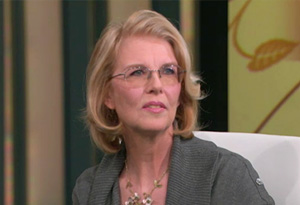Charles Dickens: A Life Excerpt

PAGE 2
The Pickwick Papers sold fewer than 500 copies of the first monthly number. The fourth number sold 4,000, the eleventh 14,000, and the last numbers around 40,000. Once published in volume form, it sold well for the rest of Dickens's life and after. By 1878, it had sold 1.6 million copies in various editions.
The success of his literary efforts enabled Dickens to progress in his private life, and on the second of April 1836, he married Catherine Hogarth, the daughter of George Hogarth, the editor of the newly established Evening Chronicle, a journal to which Dickens contributed twenty pieces. The Hogarths were Scottish, and before becoming a journalist George had been a lawyer in Edinburgh and the legal adviser and intimate friend of Walter Scott, an author Dickens very much admired. Catherine was the eldest of nine children, and the Hogarths were a lively, clever family. George himself was an accomplished musician and served as music critic of another newspaper that Dickens had written for the Morning Chronicle.
The twenty-four-year-old Dickens embraced the Hogarth family and, in turn, was embraced by them. He was impressed with their cultural connections, their liveliness, and their talents, especially the musical ones, which Dickens had a particular affinity for, being himself a performer and ready singer of popular songs, and he treated not only George but also Mrs. Hogarth with great affection. It may have seemed to him that he had found the one family that perfectly reflected his own aspirations to a hardworking prominence that was both artistic and bourgeois. An earlier suit had failed. His beloved, a young woman named Maria Beadnell, daughter of a banker, whom he had courted obsessively for four years, had finally rejected him (or her connections had broken off the relationship—the circumstances remain unclear) in May 1833.
Catherine Hogarth was a placid and gentle young woman of twenty quite unlike Maria Beadnell. Dickens's letters to her show that he felt affectionate toward Catherine, though not especially passionate, and that he took directing and molding her as seriously as he took pleasing and courting her—he was moving eagerly into the accepted Victorian role of paterfamilias. He also grew quite fond of, and intimate with, Catherine's younger sister Mary, who moved in with the young couple. His marriage and his relationship with the Hogarths, then, nicely expressed who he thought himself to be at the time, as well as his ideal of family life—a sort of cozy, busy, fecund, sociable, and comfortable household where people with imagination, energy, and considerable social mobility could gather and find both enjoyment and stimulation. The family formed by Charles, Catherine, and Mary seems to have suited all of them, and for Dickens it was as close as he ever came to domestic happiness. The gentle and affectionate, but somewhat languid Catherine satisfied the role of wife and mother, while the quicker Mary offered a more virginal and intellectual form of female companionship.
The success of his literary efforts enabled Dickens to progress in his private life, and on the second of April 1836, he married Catherine Hogarth, the daughter of George Hogarth, the editor of the newly established Evening Chronicle, a journal to which Dickens contributed twenty pieces. The Hogarths were Scottish, and before becoming a journalist George had been a lawyer in Edinburgh and the legal adviser and intimate friend of Walter Scott, an author Dickens very much admired. Catherine was the eldest of nine children, and the Hogarths were a lively, clever family. George himself was an accomplished musician and served as music critic of another newspaper that Dickens had written for the Morning Chronicle.
The twenty-four-year-old Dickens embraced the Hogarth family and, in turn, was embraced by them. He was impressed with their cultural connections, their liveliness, and their talents, especially the musical ones, which Dickens had a particular affinity for, being himself a performer and ready singer of popular songs, and he treated not only George but also Mrs. Hogarth with great affection. It may have seemed to him that he had found the one family that perfectly reflected his own aspirations to a hardworking prominence that was both artistic and bourgeois. An earlier suit had failed. His beloved, a young woman named Maria Beadnell, daughter of a banker, whom he had courted obsessively for four years, had finally rejected him (or her connections had broken off the relationship—the circumstances remain unclear) in May 1833.
Catherine Hogarth was a placid and gentle young woman of twenty quite unlike Maria Beadnell. Dickens's letters to her show that he felt affectionate toward Catherine, though not especially passionate, and that he took directing and molding her as seriously as he took pleasing and courting her—he was moving eagerly into the accepted Victorian role of paterfamilias. He also grew quite fond of, and intimate with, Catherine's younger sister Mary, who moved in with the young couple. His marriage and his relationship with the Hogarths, then, nicely expressed who he thought himself to be at the time, as well as his ideal of family life—a sort of cozy, busy, fecund, sociable, and comfortable household where people with imagination, energy, and considerable social mobility could gather and find both enjoyment and stimulation. The family formed by Charles, Catherine, and Mary seems to have suited all of them, and for Dickens it was as close as he ever came to domestic happiness. The gentle and affectionate, but somewhat languid Catherine satisfied the role of wife and mother, while the quicker Mary offered a more virginal and intellectual form of female companionship.
Reprinted from Charles Dickens: A Life by Jane Smiley, copyright © 2002, with the permission of Penguin Books



